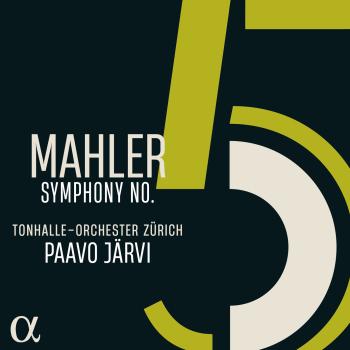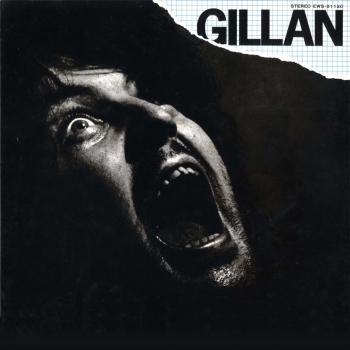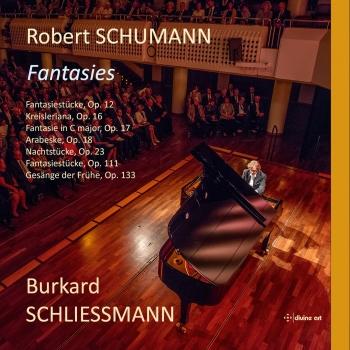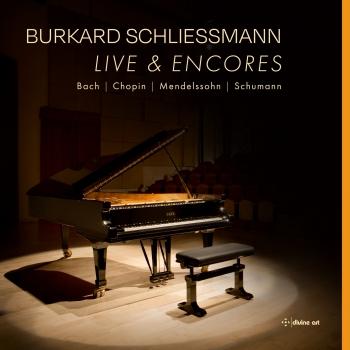
Chronological Chopin Burkard Schliessmann
Album info
Album-Release:
2016
HRA-Release:
12.01.2016
Label: Divine Art
Genre: Classical
Subgenre: Instrumental
Artist: Burkard Schliessmann
Composer: Frédéric Chopin
Album including Album cover Booklet (PDF)
- Frédéric Chopin (1810-1849): Scherzo No. 1 in B Minor, Op. 20
- 1 Scherzo No. 1 in B Minor, Op. 20 10:02
- Ballade No. 1 in G Minor, Op. 23
- 2 Ballade No. 1 in G Minor, Op. 23 09:50
- 24 Préludes, Op. 28
- 3 No. 1 in C Major 00:39
- 4 No. 2 in A Minor 02:01
- 5 No. 3 in G Major 01:17
- 6 No. 4 in E Minor 01:42
- 7 No. 5 in D Major 00:38
- 8 No. 6 in B Minor 01:41
- 9 No. 7 in A Major 00:49
- 10 No. 8 in F-Sharp Minor 02:05
- 11 No. 9 in E Major 01:06
- 12 No. 10 in C-Sharp Minor 00:33
- 13 No. 11 in B Major 00:33
- 14 No. 12 in G-Sharp Minor 01:16
- 15 No. 13 in F-Sharp Major 02:59
- 16 No. 14 in E-Flat Minor 00:34
- 17 No. 15 in D-Flat Major, -Raindrop- 04:46
- 18 No. 16 in B-Flat Minor 01:33
- 19 No. 17 in A-Flat Major 02:55
- 20 No. 18 in F Minor 01:01
- 21 No. 19 in E-Flat Major 01:48
- 22 No. 20 in C Minor 01:21
- 23 No. 21 in B-Flat Major 02:16
- 24 No. 22 in G Minor 00:46
- 25 No. 23 in F Major 01:02
- 26 No. 24 in D Minor 02:27
- Scherzo No. 2 in B-Flat Minor, Op. 31
- 27 Scherzo No. 2 in B-Flat Minor, Op. 31 11:08
- Ballade No. 2 in F Major, Op. 38
- 28 Ballade No. 2 in F Major, Op. 38 07:12
- Scherzo No. 3 in C-Sharp Minor, Op. 39
- 29 Scherzo No. 3 in C-Sharp Minor, Op. 39 07:49
- Prelude No. 25 in C-Sharp Minor, Op. 45
- 30 Prelude No. 25 in C-Sharp Minor, Op. 45 04:49
- Ballade No. 3 in A-Flat Major, Op. 47
- 31 Ballade No. 3 in A-Flat Major, Op. 47 07:22
- Fantasy in F Minor, Op. 49
- 32 Fantasy in F Minor, Op. 49 13:06
- Ballade No. 4 in F Minor, Op. 52
- 33 Ballade No. 4 in F Minor, Op. 52 11:27
- Scherzo No. 4 in E Major, Op. 54
- 34 Scherzo No. 4 in E Major, Op. 54 12:09
- 35 Berceuse in D-Flat Major, Op. 57 04:43
- 36 Barcarolle in F-Sharp Major, Op. 60 08:23
- 37 Polonaise No. 7 in A-Flat Major, Op. 61, -Polonaise-fantaisie- 13:26
Info for Chronological Chopin
A potential (definite!) Collector's item for the future, is this wonderful recital by leading German pianist Burkard Schliessmann, who presents Chopin's musical development through a chronological program including the 24 Preludes, Op. 28, the complete Scherzi and Ballades and other works, in stunning high-definition audio.
Schliessmann is the perfect interpreter of Chopin, bringing out the inner character of the pieces. A landmark recording.
“A pianist with a big, luxuriant tone, exceptional technique, and considerable sensitivity and intelligence. All of these virtues are deployed on Chronological Chopin . This is an album with the highest aspirations for expressing the composer's muse, and in general those aspirations are met. The sound engineering is warm and full. Schliessmann's liner notes are extensive and enlightening. Schliessmann will persuade you of the greatness of Chopin to a degree matched by few other pianists.” (Dave Saemann, Fanfare)
“Burkard Schliessmann's fascinating approach sees the homage and proximity to Bach as constructive in, for example, the Preludes. Schliessmann prefers a clear structure and line, representing controlled emotions. The result is not only convincing, but overwhelming in many aspects. This is Chopin to re-discover and re-listen to. One cannot describe how Schliessmann plays all this, one needs to listen to it.” (Dr. Ingobert Waltenberger, Der Neue Merker)
Burkard Schliessmann, piano
Burkard Schliessmann
It is tempting to see Burkard Schliessmann's hobby of scuba diving as more than just a way of relaxing. After all, his passion for discovering hidden treasures, exploring the depths in search of dazzling colours, shapes and formations, is not dissimilar to what motivates him when he sits at one of his two Steinways in a concert hall or recording studio and immerses himself in the 19th century world of Chopin or Schumann.
In his performances, Schliessmann seeks out fantastical forms and colours and converts these into sound, astounding us with the poetic impact of works whose every nook and cranny we believed had long since been fully explored. And yet Schliessmann is not one of those performers who merely dazzle with their brilliant technique but can get into deep water when the going gets tough. Remaining true to his mission, he never allows his musical narrations to deviate from the course he has set for them. Such consistency is only one facet of this artist. The other is what Schliessmann himself describes as 'intuition': "For me, this term means embracing everything at the highest level - including both the emotional and the intellectual. It is a kind of instinct that ensures you do the 'right thing': The 'right thing' in music? Schliessmann's desire to penetrate to the truth of a musical composition is not just an aspiration - in his performances it becomes a reality. A combination of architect and sensuous musician right down to his fingertips, he presents us with subtly changing perspec-tives on every detail of the music, imbuing it with inner tension and epic energy. It is this balance of intellectuality and emotionality, detachment and subjective directness that enables Schliessmann "to adhere to the truth in reproducing the music, but also in incorporating my own aura." Schliessmann readily admits that in doing this he is following in the steps of past masters like Alfred Cortot and Artur Schnabel: "Their approach to playing gave listeners the impression that the music was being created on the spot - and yet it was all planned down to the last detail." Schliessmann's affinity with an older piano playing tradition was reinforced by his teachers - musicians like Poldi Mildner and Shura Cherkassky, with whom he studied between 1987 and 1989 in Washington and Paris. Mildner had been a student of Rachmaninov, Schnabel and Liszt's pupil Moritz Rosenthal, while Cherkassky was taught by Leopold Godowsky's son-in-law David Saperton.
These contacts with a past era of piano playing have left their mark on Schliessmann - and not just on his repertoire, which ranges from Schumann's Symphonic Studies and Liszt's B-minor sonata to Godowsky's Symphonic Metamorphoses on Strauss. Schliessmann also feels most at home with the strong bass tones of concert instruments built around 1920-30. As though it was the most natural thing in the world he accesses the 19th century via Romantic literature, examining in depth the fine arts and philosophy of the period and exploring further those aspects he sees as interacting with the music. As he says of the Liszt sonata: "Many interpreters make a problem out of it, but I myself don't need to think too hard about my interpretation, as the 'background' to the work is already in my blood apriori." He adopts an equally light touch in his approach to Chopin. Just as he rediscovered the long-neglected influence of Brahms' late piano works on Schoenberg, so, too, Schliessmann has rehabilitated the distant imprint of Johann Sebastian Bach on Chopin, eloquently combining structure and poetry in his performances of the latter's works. Even though "Chopin is for me the crowning glory of piano-playing", he is determined to turn to Bach and his 'Art of the Fugue' in the near future - in a version for organ rather than for piano. He is, after all, also a trained organist, and as a member of the revered Comité d'honneur de l'Association des Grandes Orgues de Chartres (Paris-Chartres) is responsible for awarding the Joh. Seb. Bach special prize for the best interpretation of a major organ work by the composer. Whether in the depths of the ocean or the lofty heights of the organ gallery, Burkard Schliessmann is a phenomenon to be reckoned with.(Guido Fischer)
Booklet for Chronological Chopin















